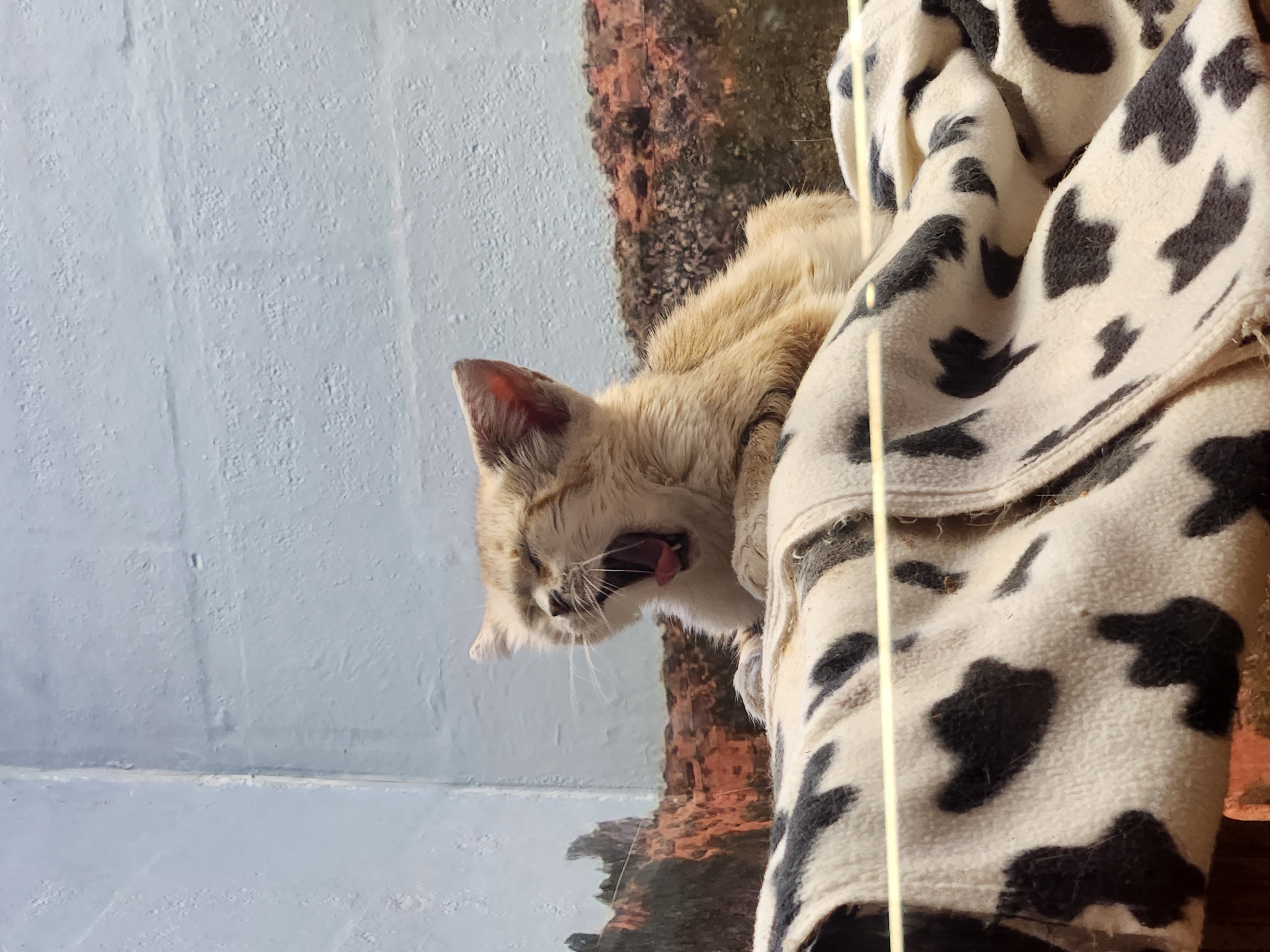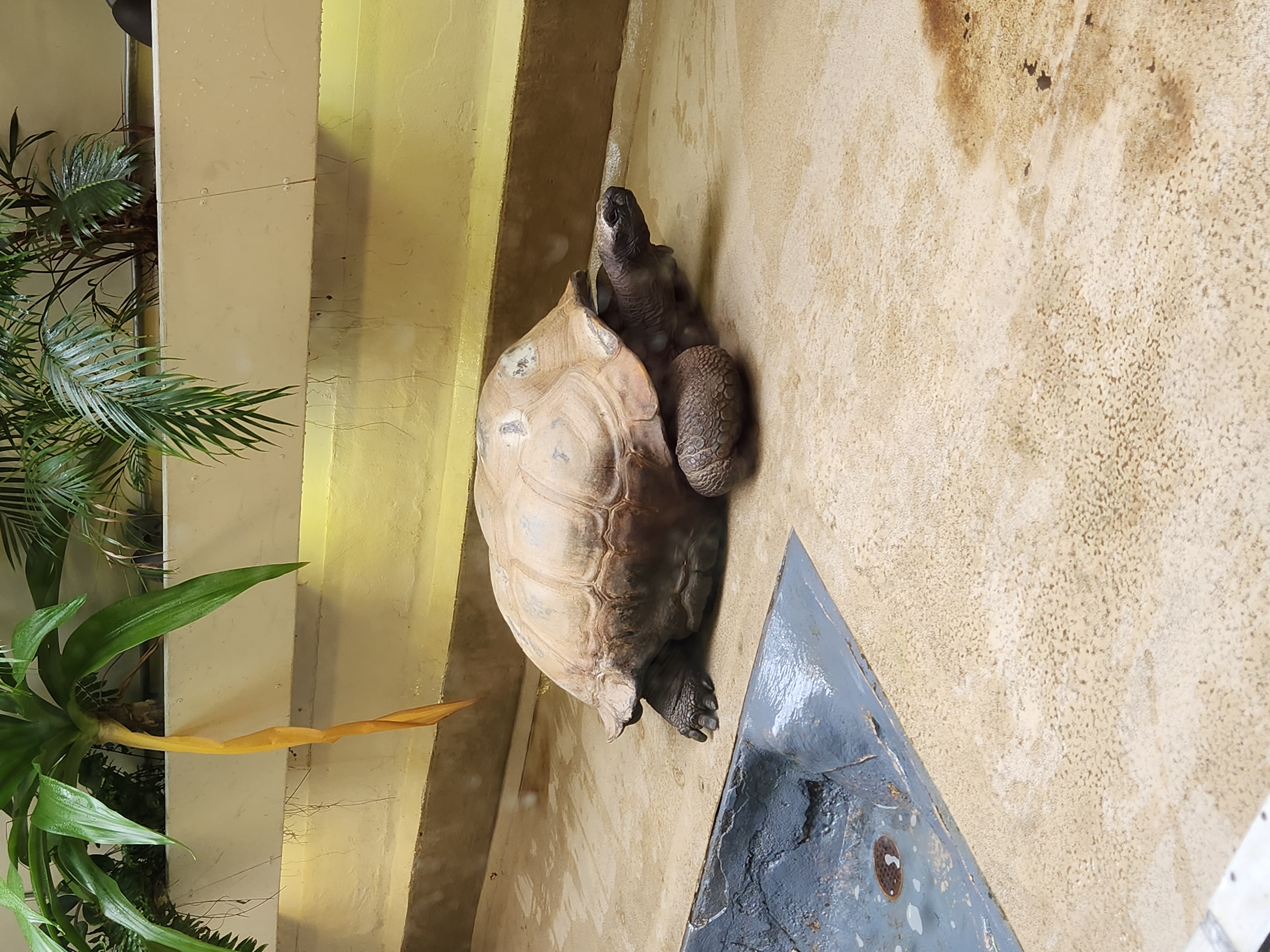National Zoo Excursion
May 4th, 2025, at the National Zoo
On May 4th, 2025, I went on a trip with the Science and Global Change College Park Scholars program to the National Zoo in Washington D.C. There I walked around with other people in the Science and Global Change (SGC) Scholars Program and toured many of the exhibits and houses they had for various animals from various places around the world. We then went on a tour with Dr. Merck, one of our professors in our Scholars Program, who informed us about the Amazonia House of the Zoo.
The small mammal house was quite interesting, featuring many small mammals that lived in unique environments and habitats. Many species were on display including the Golden-headed Lion Tamarin, Fennec Fox, Rock Hyrax, and the Sand Cat. Tremendous amounts of information were listed about these species. The Lion Tamarin had listed it’s endangered status, their living range, habitat, diet, why they are endangered, and what you can do to support them. Similar information was available for the Fennec Fox, except it’s not endangered, so there was no information regarding any endangered status. The Rock Hyrax had information about their living range, habitat, diet, and how they react to weather conditions and can live in various ecosystems. The Sand Cat had a unique portrayal, with it showing illustrations and uniqueness of whisker patterns along with the common living range, habitat, and diet.

A Sand Cat waking up from a nap
In the small mammal house there were a lot of displays that weren’t just text plastered on a wall. These displays included small flipping panels that had text and a diagram below them to quiz readers and cases with skulls and bone structures in them to explain biology of animals. I believe that this hall was designed for a younger audience, specifically elementary to middle school age, as many of the plaques had text on them written quite simply with explanations of specific longer words younger kids wouldn’t fully understand (i.e. endangered). Many people who were in these exhibits were very interested in reading the plaques, many of which were adults, as there was additional information on them to allow for adults to read more complex and diverse information about many of the animals in the exhibits.
We visited the Reptile Discovery Center on our own, skipping out on the tour Dr. Holtz would do later on during the day. The reptile house featured many different and unique animals including the Komodo Dragon, the Yellow Headed Day Gecko, the Australian Snake-Necked Turtle, and Aldabra Tortoise. For each of these species, the place that they are found in the world, their scientific/genus name, traditional habitat, and a picture of the animal were shown. Each plaque also featured a unique fact about the animal listed that helps explain more about their behaviors and the way they live their lives.
The Reptile Discovery Center has very few non-text educational diagrams scattered around, with most information coming from the plaques placed outside of the tanks of each reptile. There were some small boards and tables that had plants that reptiles traditionally eat, but other than that much of the information was purely written. These displays were informative to explain the diets of these reptiles, as the plaques did not have this information on them like the small mammal exhibits did. I believe that this hall was aimed at a higher educational level, around middle school age. The information listed was written smaller and more complicated, and plaques were written in longer paragraph form with less easy breaks. There were not a lot of people reading the plaques in this hall, as many people were focused on looking at the reptiles. While I am sure that this information is important, it did not look like many people were highly invested in reading these plaques.

An Aldabra Tortoise going for a morning stroll
We also went on a tour in the Amazonia House with Dr. Merck, as well as taking a walkthrough ourselves beforehand to look at the species and some initial information. Some of the species that this exhibit had on display included the Guinea Pig, Panamanian Golden Frog, Aramapia, and the Roseate Spoonbill. These animals all had small plaques or diagrams that gave their name, some basic information about them and animals related to them, and an image of them along with their scientific/genus name.
The Amazonia House had many non-verbal displays scattered around, not including the cages and tanks that animals were in. A good example would be a model of an electric eel, which was made for those who would not be able to see the eels in the exhibits (which during our tour were not out). This display allowed people to feel what the eel looked like, and explained the positive and negative charges both sides of the eel had. Additionally, the Roseate Spoonbill were allowed to roam around outside of any exhibits, meaning that they could interact with tour-goers walking around. This hall was definitely designed for a lower education level, leaning more towards elementary and low-middle school students. I saw a lot of people looking at these diagrams and plaques, a mix of children and adults, which proved that this hall was likely the most interesting for normal tour-goers at the zoo.
The zoos heightened the understanding and learning of its guests through methods that didn’t just include reading plaques, such as having visual diagrams of animal biology and relationships and 3D models that guests could interact with. Many of the halls had animal skull structures, brain structures, or other biological features that were either unique to certain species or provided a distinct biological advantage to specific organisms. These diagrams allowed for visitors to understand what they were being told without having to read walls of text, allowing for younger people to spend less time reading and explore the museum more. These models made it much easier for younger people to understand given messages, as they didn’t have to deal with reading and understanding words they haven’t learned yet.
There were also multiple examples of objects and settings created or given to animals in order to keep them comfortable and stress-free, such as blankets for animals that needed to keep warm or fake ecosystems for animals who were highly dependent on specific ecosystem conditions. Many of the mammals had blankets with them to keep them warm while they slept, including small mammals like the Fennec Fox and even larger mammals like the Orangutan. The blankets, while not found commonly in nature, made up for the burrows or foliage they would normally hide in to sleep and keep them warm during the night, also providing some cover for the animals away from visitor eyes.


